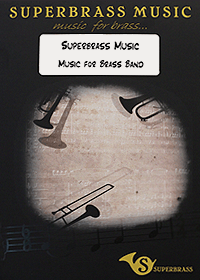Editorial ~ 2008: April
3-Apr-2008This month we look closely at the health of the regional championships and the need for change at First Section and Fourth Section level.
A matter of life and death
There has always been something of a cyclical nature to the general well being of the the brass band movement.
Since the Second World War there have been periods of optimism and expansion as well as pessimism and contraction. However, the figures speak clearly for themselves – for the past 25 years we have been in a slow, but steady decline.
Last year 4BR spoke of a ‘tipping point’ – a cut off level of actively competing bands at the Regional Championships, that if fallen below, could well signal the start of possible terminal decline.
That figure was 500 bands.
This year, 506 bands took to the stage in each of the eight regions, up slightly from the low point of exactly 500 that took part in 2005, but still a significant fall from the high water mark of the last 25 years – the 591 bands that took part in 1988. Since then, despite occasional small surges in numbers, the decline has been marked and probably permanent.
In a major article to be published later this week, 4BR has looked closely at the actual number of bands that have taken part in the Regional Championships in the last 25 years, and has tried to make sense of the figures in each of the regions.
Outside factors such as the long term effects of the Miner’s Strike and rapid industrial change in many of the traditional brass band heartlands have undoubtedly played a part, but so too have changes in educational policy, cultural shifts to family dynamics and even the effects of consumer technology. We have been haemorrhaging bands at a quite alarming rate, despite boundary changes in 1985 and the creation of a new First Section in 1992.
Is it time to act? Of course, but then again, many people have been saying that for a number of years, but those with the opportunity to implement change have continually cocked a deaf ear to even accepting that change is required.
In 1992 the BFBB issued a statement that said… “at all levels the movement was basically in good health with potential for great progress.” How many would agree with that today?
4BR believes change is urgently required and sets out below, two, small, but possibly significant ways in which long term rejuvenation at Regional level can be put in place.
These alone are not the sole answers, but they will hopefully offer a constructive start to addressing a problem that is now on the verge of becoming a matter of life and death.
What do you think?
Send an email to: comments@4barsrest.com
Fit for purpose?
To borrow the remark from the former Home Secretary John Reid; “The First Section is no longer fit for purpose.”
In fact, it is hard to remember what the original purpose of the First Section was, given that today it has become the contesting equivalent of the Cruiserweight division in boxing.
A stepping stone then to the heavyweight league of the big punchers? Come off it.
What should have been a buffer zone to enable bands to make the final step in class to compete at the highest level has become a dumping ground of mediocrity and thwarted ambition.
Of the 16 First Section National Champions since 1992, how many have actually gone on to really make their mark at the highest level? Two have gone out of existence whilst a number of others have struggled to even survive.
The problem doesn’t lie with the First Section however, but with the Championship Section above it at the Regional Championships.
Since the First Section was created in 1992 the number of competing bands at Championship level has actually increased from 81 bands to 86, whilst the overall number of competing bands in the entire country during the same period of time has fallen from 565 to 506.
Can anyone tell us there are actually 86 true Championship Section quality bands out there, when at the same time the number of Second Section bands has dropped from 122 to 87 in the same period?
Of course not.
The answer lies in simply biting the bullet and re-grading the bands from the top down.
A structure that currently boats 86 Championship bands, 100 First Section, 87 Second Section, 106 Third and 126 Fourth is a structure that patently doesn’t work – not now, and certainly not in the future.
So will the organisers be brave enough – and will the bands finally accept that for the good of the movement a true pyramid structure has to be put in place to reflect the actuality of our current playing standards?
If not, then the First Section will continue to be a waste of everyone’s time.
What do you think?
Send an email to: comments@4barsrest.com
Liberate the Fourth Section
At the same time that a re-grading of bands should be undertaken, a radical new approach should also be implemented in the Fourth Section.
There can no longer be an argument to maintain the same rules for competing bands at Fourth Section level that also apply to the very highest level. The numbers also speak for themselves.
In 1984, 204 Fourth Section bands took part in the regional championships – this year it was 126. Even allowing for the introduction of the First Section in 1992, the effect of which was minimal, the decline in numbers at the most important level of banding has been startling.
Where in some regions the numbers competing was as high as 38, this year three of the eight regions had 10 or less bands taking part.
Retaining the antiquated rules governing player numbers, instrumentation, registration, repertoire and adjudication needs to be scrapped – and scrapped immediately if we are not to find the numbers falling even more.
Encouragement and development at the foundation level is the key – not prescription and narrow mindedness.
Musical decisions regarding qualification can still be made clearly by experienced judges, but what use are they if they have no bands to judge in the first place because we do not encourage enough of them to compete?
Anyone who believes things are OK at Fourth Section level is either a deluded romanticist or merely deluded full stop.
This is the one situation above all others that if not addressed will surely mark the life or death of the movement as a whole.
What do you think?
Send an email to: comments@4barsrest.com









